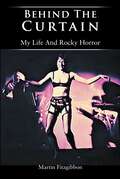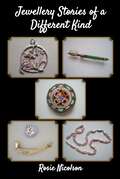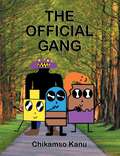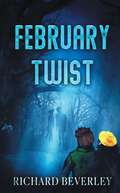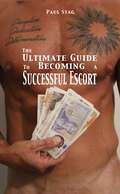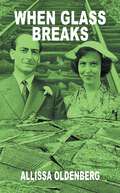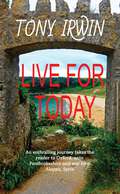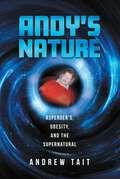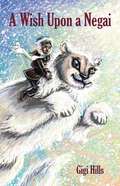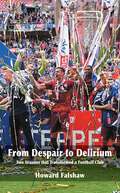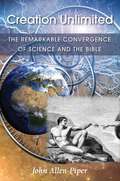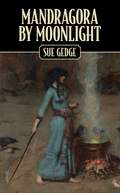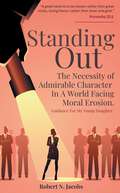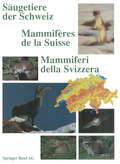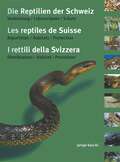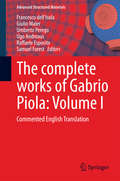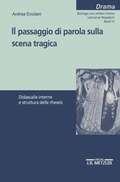- Table View
- List View
Standing Out: The Necessity of Admirable Character In A World Facing Moral Erosion.
by Robert N. JacobsWilliam Moorcroft, Potter: Individuality by Design
by Jonathan MallinsonWilliam Moorcroft (1872-1945) was one of the most celebrated potters of the early twentieth century. His career extended from the Arts and Crafts movement of the late Victorian age to the Austerity aesthetics of the Second World War. Rejecting mass production and patronised by Royalty, Moorcroft’s work was a synthesis of studio and factory, art and industry. He considered it his vocation to create an everyday art, both functional and decorative, affordable by more than a privileged few: ‘If only the people in the world would concentrate upon making all things beautiful, and if all people concentrated on developing the arts of Peace, what a world it might be,’ he wrote in a letter to his daughter in 1930.
William Moorcroft, Potter: Individuality by Design
by Jonathan MallinsonWilliam Moorcroft (1872-1945) was one of the most celebrated potters of the early twentieth century. His career extended from the Arts and Crafts movement of the late Victorian age to the Austerity aesthetics of the Second World War. Rejecting mass production and patronised by Royalty, Moorcroft’s work was a synthesis of studio and factory, art and industry. He considered it his vocation to create an everyday art, both functional and decorative, affordable by more than a privileged few: ‘If only the people in the world would concentrate upon making all things beautiful, and if all people concentrated on developing the arts of Peace, what a world it might be,’ he wrote in a letter to his daughter in 1930.
How Divine Images Became Art
by Oleg TarasovHow Divine Images Became Art tells the story of the parallel ‘discovery’ of Russian medieval art and of the Italian ‘primitives’ at the beginning of the twentieth century. While these two developments are well-known, they are usually studied in isolation. Tarasov’s study has the great merit of showing the connection between the art world in Russia and the West, and its impact in the cultural history of the continent in the pre-war period.
Hephaestus Reloaded: Composed For 10 Hands / Composizione Per 10 Mani
by Brunella Antomarini Adam Berg Vladimir D’Amora Alessandro De Francesco Miltos ManetaHephaestus Reloaded / Efesto Reloaded, presented in a bilingual (English/Italian) publication, and whose five authors are from Greece, Italy, and the US, invokes as its first inspiration the myth of Hephaestus who embodied a twofold entity: both disabled and technically capacious. The myth of Hephaestus has been passed across the centuries as an ancient metaphor signifying the idea of becoming-world, in which any distinction between the natural and the artificial, or the organic and the technical, is blurred. Human beings, by virtue of their physical vulnerabilities and limits, have enhanced their technological powers to the point of transcending their own given nature. At present, a variety of critical discourses in disciplines such as philosophy, history, aesthetics, and cognitive sciences pay attention to our becoming-hybrid (organic and mechanical beings) – unleashing a space for research that probes the concept of transcendence. Each of the contributions in this book addresses – through its own peculiar perspective, method and experimental style – a new way to approach the role of transcendence in socio-cultural life.In the Occidental history of ideas, the notion of transcendence has received at least three canonical articulations that are challenged by this book: religious (Judeo-Christian traditions), philosophical (Platonic-intellectual universality of ideas), and scientific (the objective and technological turn of knowledge). Nonetheless, it is with the rise of cybernetics, with its digital and virtual modalities of systems, networks, and knowledge, that our human environment emerges as a source of knowledge in itself -- not simply as an object but rather as an immersive agency in which nature, knowledge, technique merge. The transcendence of the actual and the virtual into a “third” element is construed and analyzed in this book through conceptual schemes that rely on a post-binary or non-binary understanding of coincidences, triangulations, hybrids, or post-human combinatorics. What is ultimately explored is how transcendence is ejected from strictly theological, philosophical, or scientific groundings and emerges as a germinating point of becoming (something else).
Säugetiere der Schweiz / Mammifères de la Suisse / Mammiferi della Svizzera: Verbreitung · Biologie · Ökologie / Répartition · Biologie · Ecologie / Distribuzione · Biologia · Ecologia (Denkschriften der schweizerischen Naturforschenden Gesellschaft #103)
by Denkschriftenkommission Denkschriftenkommission DerDie Reptilien der Schweiz / Les reptiles de Suisse / I rettili della Svizzera: Verbreitung · Lebensräume · Schutz / Répartition · Habitats · Protection / Distribuzione · Habitat · Protezione
by Ulrich HoferThe complete works of Gabrio Piola: Commented English Translation (Advanced Structured Materials #38)
by Francesco Da Dell'Isola Ugo Andreaus Raffaele Esposito Samuel Forest Giulio Maier Umberto PeregoGabrio Piola works had an enormous impact on the development of applied mathematics and continuum mechanics. An excellent scientific committee who took it upon themselves to translate his complete works. In a second step, they commented Piola’s work and compared it to modern theories in mechanics in order to stress Piola’s impact on modern science and proofs that he has set milestones in applied mathematics.This book presents Piola's original Italian text together with ist translations and their comments. It shows impressively that Gabrio Piola’s work must still be regarded as a modern theory.
Il passaggio di parola sulla scena tragica: Didascalie interne e struttura delle rheseis
by Andrea ErcolaniDer Sprecherwechsel auf der attischen Bühne. Textinterne Regieanweisungen und Aufbau der Rheseis. Gegenstand dieser Arbeit ist die Aufbautechnik des tragischen Dialogs.
